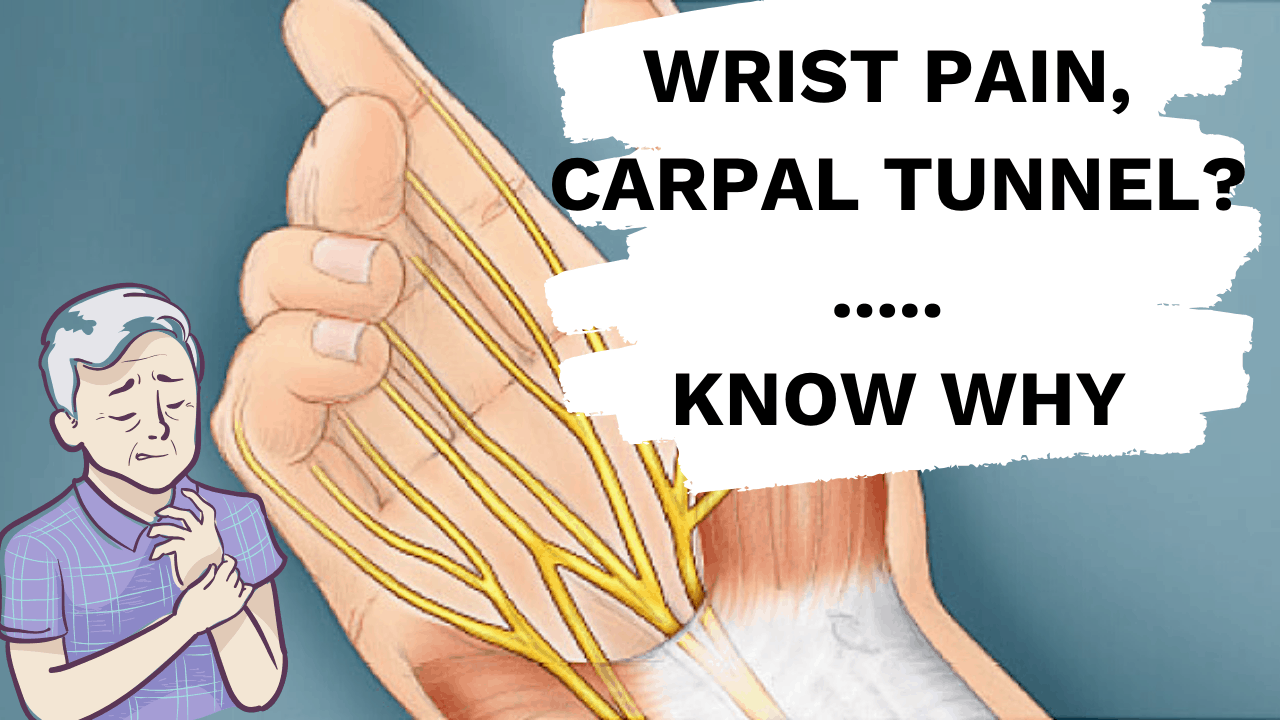
25 Apr When Carpal Tunnel Syndrome is the Wrong Diagnosis
You have numbness, pins and needles, burning, tingling in your hand, fingers, and wrist.
You wake up every morning having to aggressively massage your hands.
You can’t work with your hands without having to take frequent breaks, and now you have to stop doing several activities because you just can’t tolerate the symptoms.
You go to a doctor, or search on Google and you get an answer……Carpal Tunnel Syndrome (CTS)!
You have no doubt heard this before if you have consulted Dr. Google searching for answers. Maybe you have found your way to our blog because the other things you are reading seem, well, a bit overwhelming? That’s okay.
What Is The Carpal Tunnel?
Here, I will describe carpal tunnel in the most simplified way, while giving you the information you need.
The carpal tunnel is simply a tunnel in your wrist that has the carpal AKA wrist bones as the bottom and a ligament called the transverse carpal ligament making up the roof.
Traveling through this tunnel are the majority of ligaments and tendons which help you move your fingers and one extremely important nerve, the median nerve.
Now that we have explored the simple anatomy of the carpal tunnel, let’s focus on the median nerve. Why is the median nerve so important? I am glad you asked.
The median nerve starts all the way in your neck!
It starts as spinal cord nerve roots that come together in your armpit to form the actual median nerve itself, which then travels down the arm, across the elbow, into the forearm, and then through the carpal tunnel into the hand.
Confused?
Let’s draw it!
How A Median Nerve Problem Presents
Symptoms of carpal tunnel syndrome include the following:
- numbness, tingling, and pain in your thumb and the first three fingers of your hand
- pain and burning that travels up your arm
- wrist pain at night that interferes with sleep
- weakness in the muscles of the hand
Just because your symptoms are in the hand doesn’t mean the nerve is stuck in the carpal tunnel though!
If your median nerve travels all the way from your spine to your fingers, and you have been diagnosed with carpal tunnel syndrome, but none of the traditional treatments, maybe even including surgery, have failed to relieve your pain, then there is a high likelihood that it’s not carpal tunnel syndrome.
Let me ask a question.
Would you think it’s possible that the median nerve could be compressed at more than just the carpal tunnel leading to the same symptoms?
If you answered YES! Then you are right!
Recently, Dr. Joe from Barefoot Rehab was talking to a patient who was getting 6 weeks of physical therapy for her carpal tunnel and experienced 0% relief.
After asking her a few questions, it was made clear that she actually had a C6 radiculopathy. Her numb thumb and index finger was coming from her neck, not the forearm or carpal tunnel.
This is why getting the right diagnosis before getting any treatment is SO important.
You may never get permanent relief if you aren’t diagnosed correctly.
What are Traditional Treatments for Carpal Tunnel Syndrome?
Traditional treatments for a diagnosis of CTS include things like:
- wrist bracing
- NSAIDs (Advil, Tylenol)
- physical therapy
- cortisone injections
- surgery
Statistics agree that for traditional CTS the traditional treatments have a high success rate with surgery being over 95% effective for most people.
What is the Most Common Cause of Nerve Entrapments?
The most common, and least diagnosed cause of muscle pain and nerve entrapments is something called adhesion. Adhesion is like glue in the muscles and connective tissues.
Here at Barefoot rehab, if you come in with a previous diagnosis of carpal tunnel, which hasn’t responded to treatment, we will make sure to evaluate all the areas where the median nerve can become entrapped and treat any adhesion, which may be limiting the proper motion of the nerve from your neck to your fingers.
A study from 2017 evaluated myofascial treatment for CTS, and found that the majority of people treated with myofascial manipulation had favorable results.
Adhesion removal is a form of myofascial treatment similar to what this research used. It should be noted that they also evaluated the multiple areas from neck to wrist where the median nerve can become entrapped, and their conclusion was the same.
So, if you are sick of sub-par care, nothing working, and constant pain, give us a call and schedule a consultation today.
 If you think you might be a candidate for the PERMANENT pain relief we offer at Barefoot Rehab, give us a call at 862-205-4847 to speak with one of our patient advocates and take the next steps and see if you qualify!
If you think you might be a candidate for the PERMANENT pain relief we offer at Barefoot Rehab, give us a call at 862-205-4847 to speak with one of our patient advocates and take the next steps and see if you qualify!
References:
- Sun PO, Selles RW, Jansen MC, Slijper HP, Ulrich DJO, Walbeehm ET. Recurrent and persistent carpal tunnel syndrome: predicting clinical outcome of revision surgery [published online ahead of print, 2019 Feb 15]. J Neurosurg. 2019;1–9. doi:10.3171/2018.11.JNS182598
- Louie D, Earp B, Blazar P. Long-term outcomes of carpal tunnel release: a critical review of the literature. Hand (N Y). 2012;7(3):242–246. doi:10.1007/s11552-012-9429-x
- Martins RS, Siqueira MG. Conservative therapeutic management of carpal tunnel syndrome. Arq Neuropsiquiatr. 2017;75(11):819–824. doi:10.1590/0004-282X20170152
- Pintucci M, Imamura M, Thibaut A, et al. Evaluation of fascial manipulation in carpal tunnel syndrome: a pilot randomized clinical trial. Eur J Phys Rehabil Med. 2017;53(4):630–631. doi:10.23736/S1973-9087.17.04732-3



No Comments